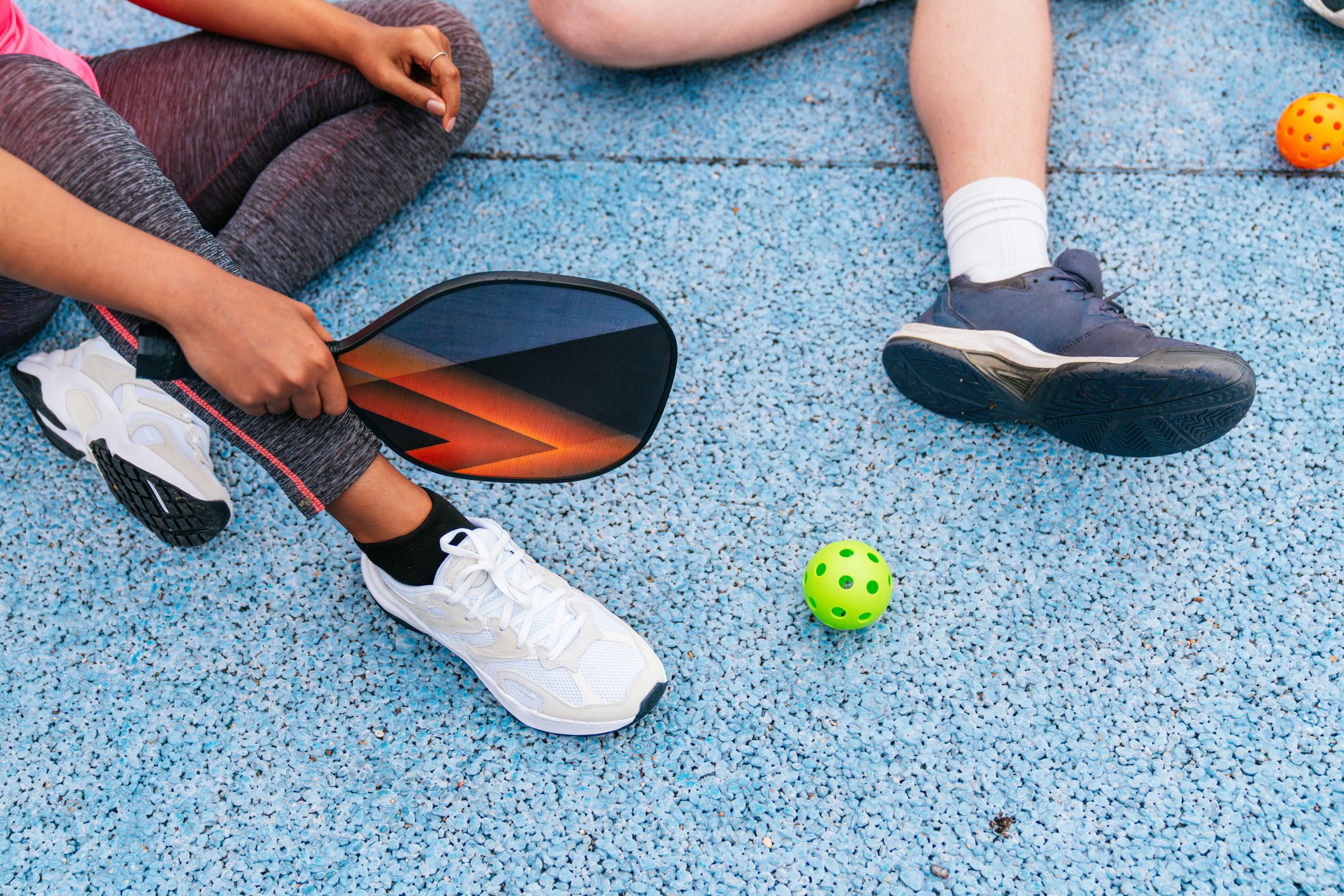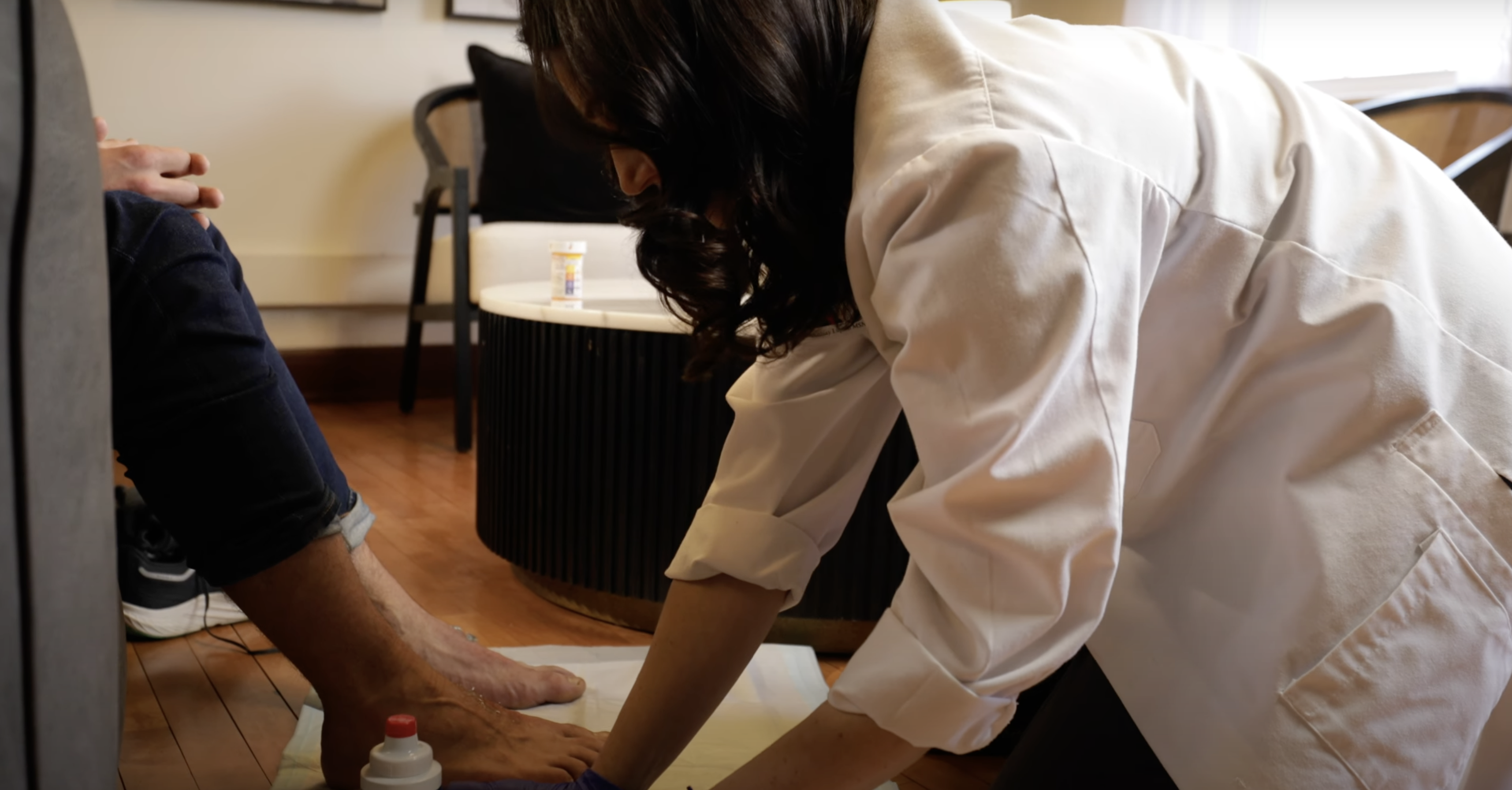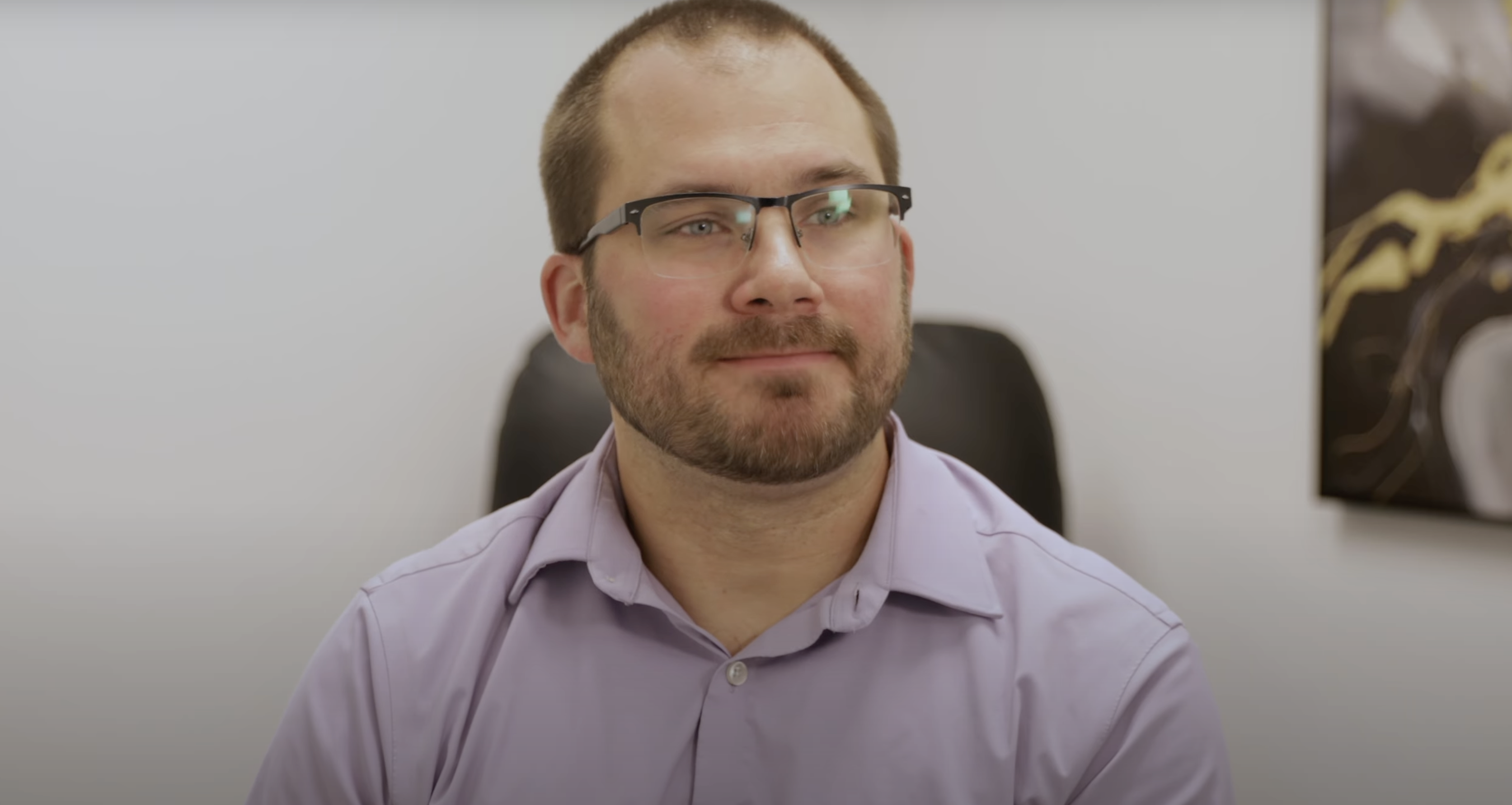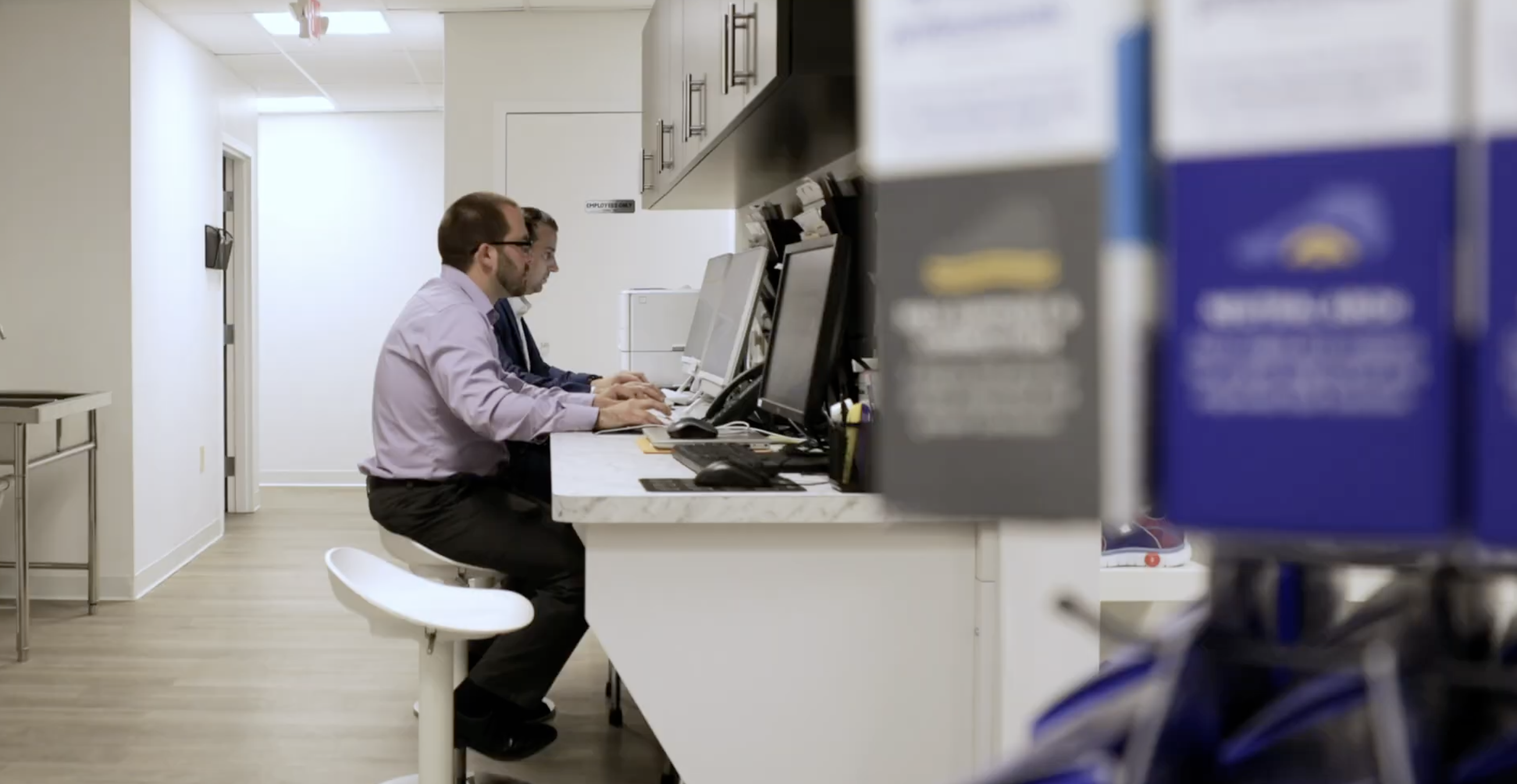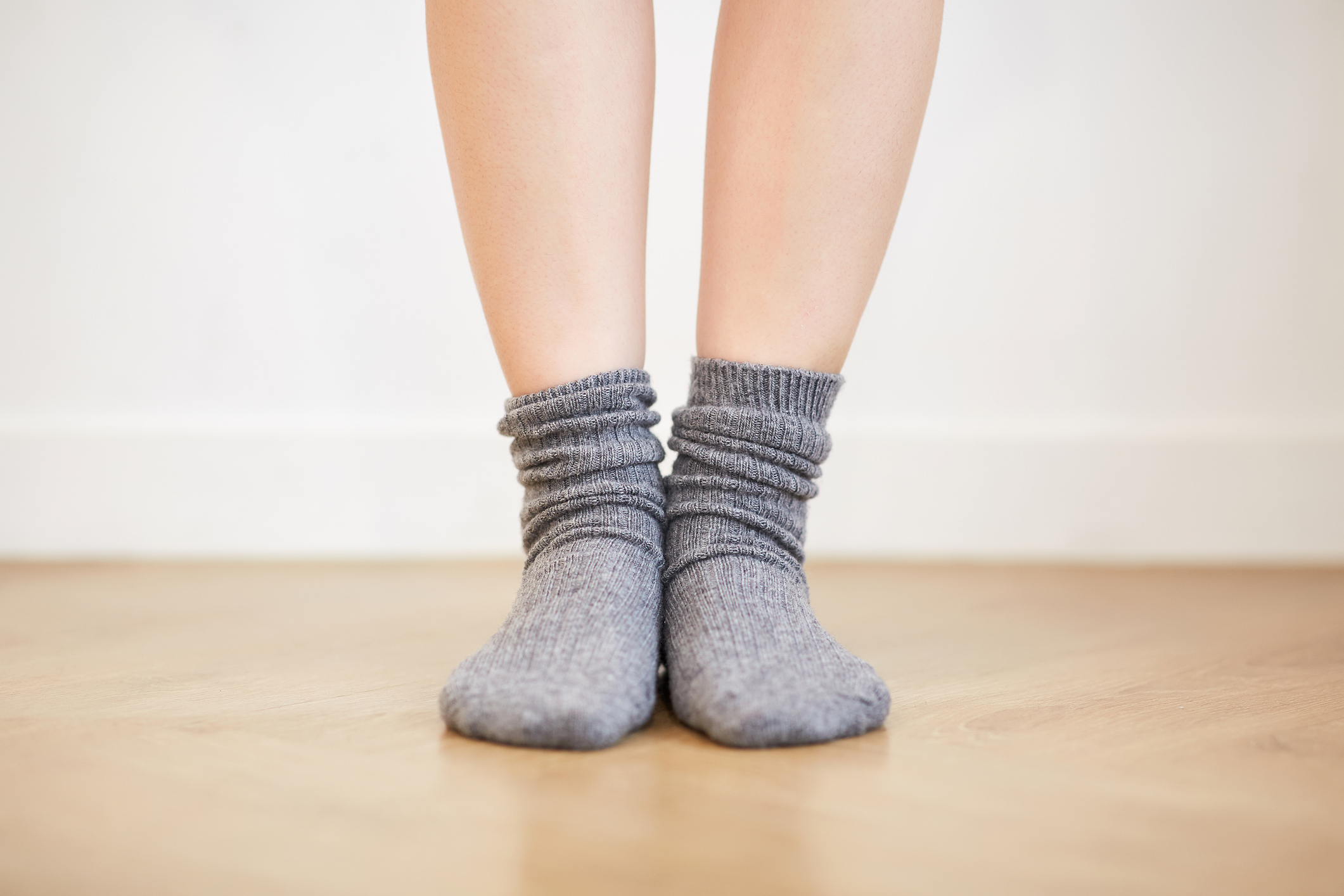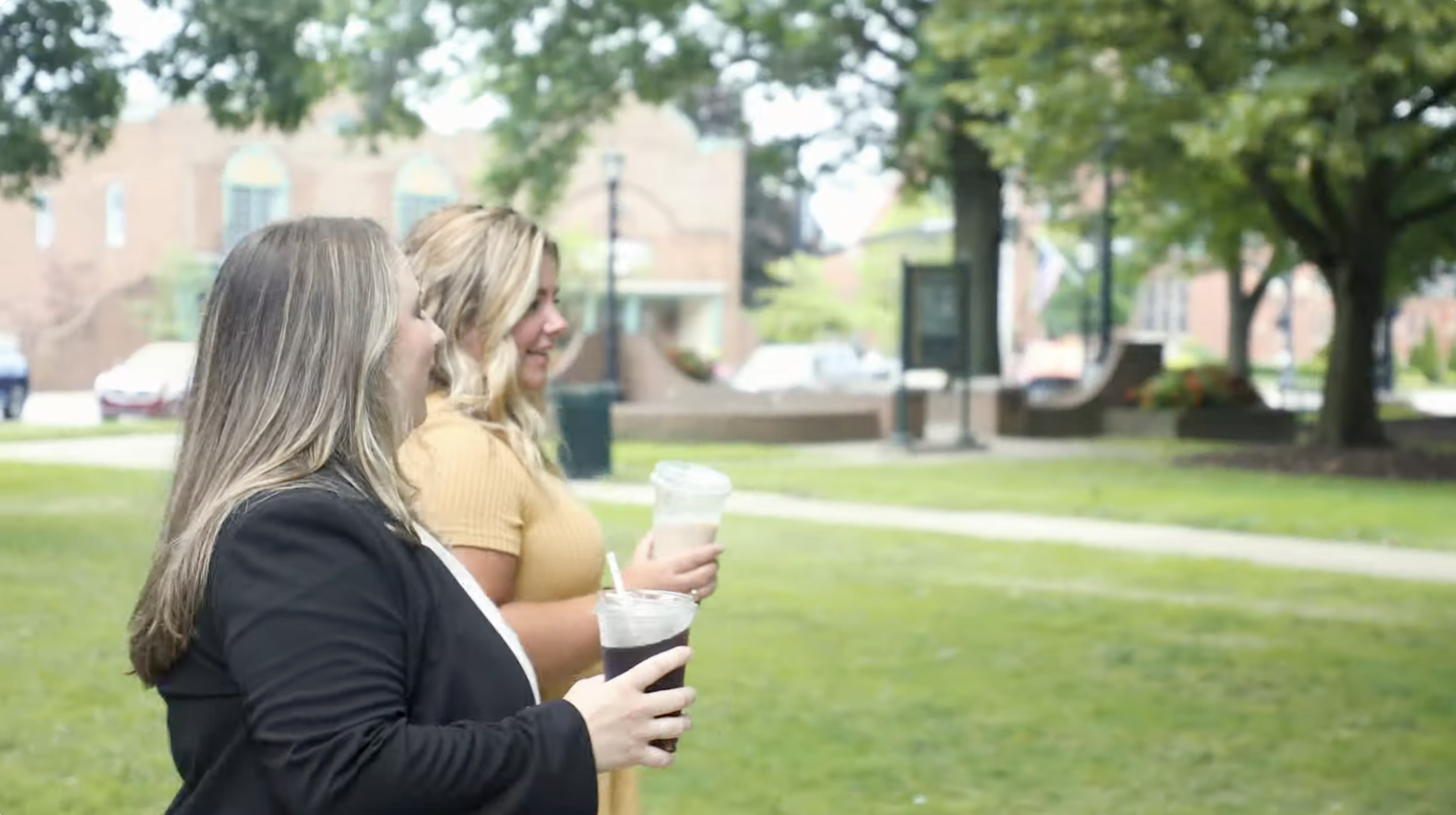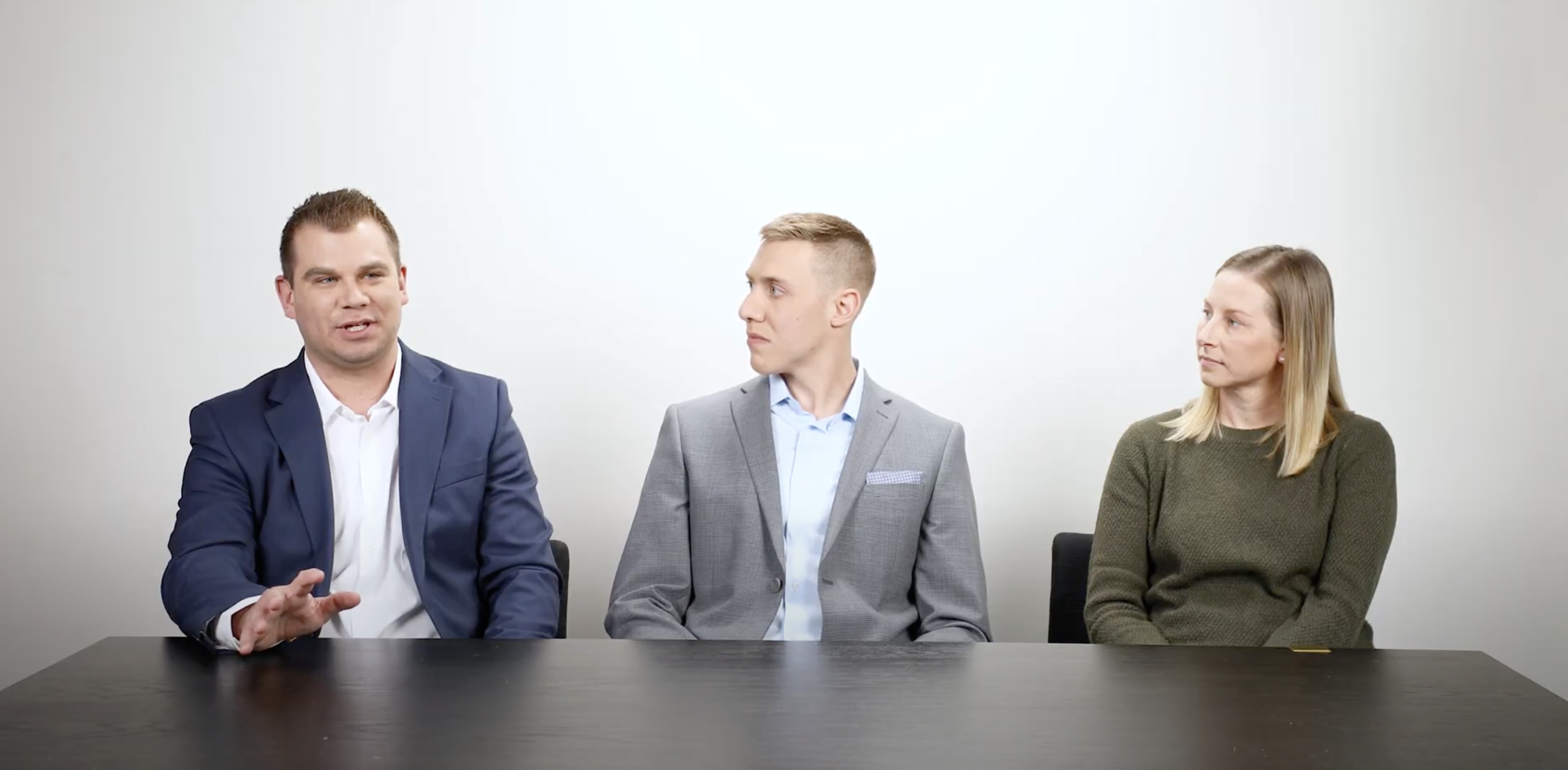The Foundation of Wellness: How Foot Health Contributes to Your Whole Body
The Foundation of Wellness: How Foot Health Contributes to Your Whole Body
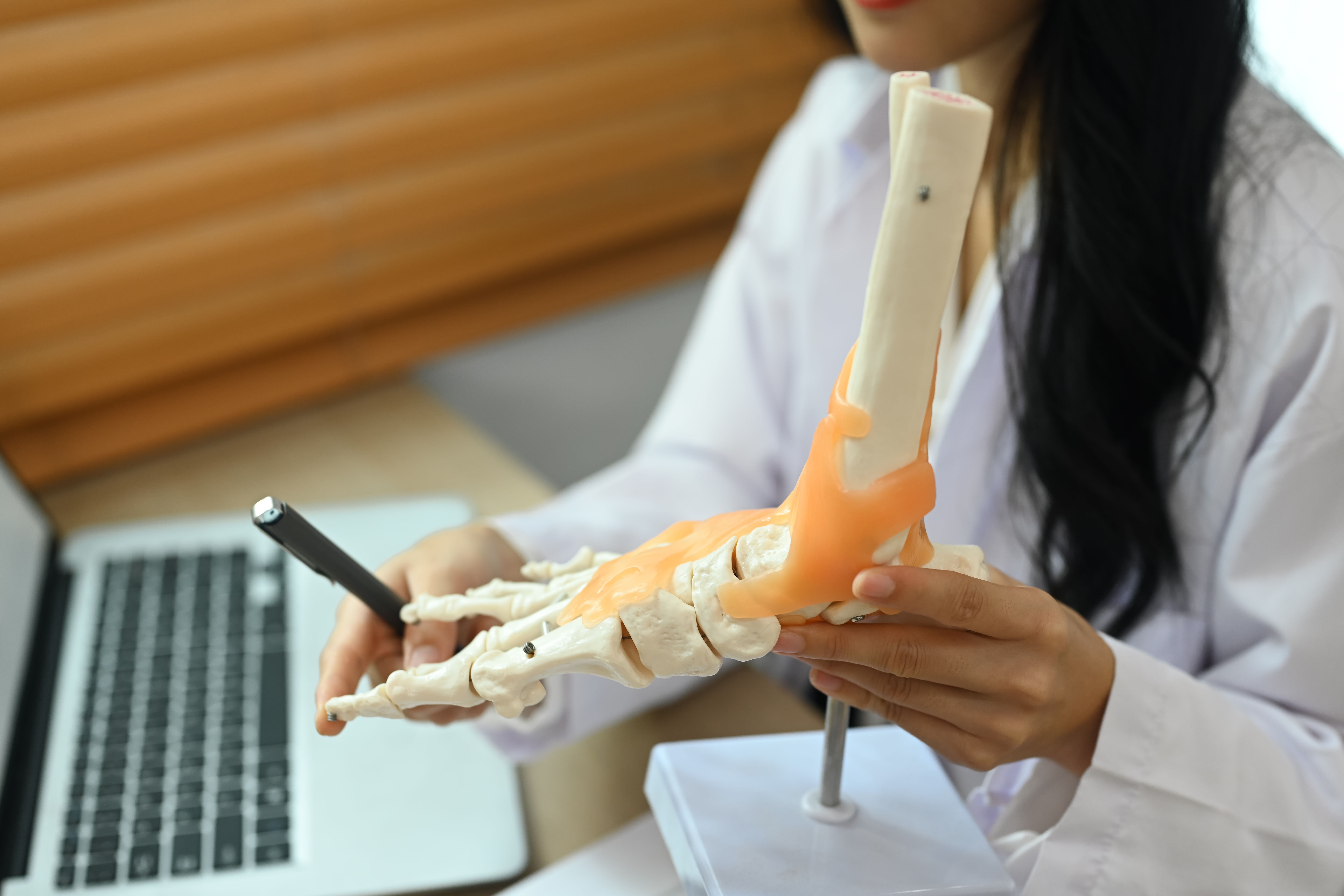
Your feet do more than get you from here to there. They are the foundation of your entire body, providing support, balance, and mobility every single day. Despite this critical role, foot health is often overlooked until discomfort or pain starts to affect other areas. Understanding the impact your foot and ankle have on your gait and how faulty mechanics may result in pain, dysfunction, injury, or instability in the feet, ankles, knees, hips, or back is essential to maintaining total-body wellness.
Foot care is not just about avoiding blisters or sore arches. When your feet are healthy and functioning properly, they help maintain proper alignment and reduce strain on your joints and muscles. Proper mechanical optimization ultimately results in a better functioning foot, ankle, and leg by maintaining more normal angular relationships in the lower extremity. When they are not, it can impact your shins, your knees and all the way up your body to the neck.
Understanding how foot health contributes to total-body wellness is the first step toward preventing injury and improving your quality of life. Proactive foot and ankle wellness can eliminate pain, prevent or delay the progression of chronic conditions and the need for surgical intervention, and help you lead a more comfortable lifestyle.
Different Types of Pain that Poor Foot Health Can Lead to:
In the case of a foot injury, your body is already trying to do the leg work of compensating. This means other muscles or joints begin working harder than they should, leading to strain and misalignment.
Here are a few examples of how foot problems can show up elsewhere in the body:
Knee Pain
Conditions like overpronation, where the foot rolls inward too much, can affect the alignment of your knees. This extra stress can lead to pain, instability, or injury over time.
Lower Back Pain
Foot-related postural changes can travel up the kinetic chain and affect spinal alignment. Flat feet or uneven weight distribution may cause the pelvis to tilt, resulting in strain and discomfort in the lower back.
Neck and Shoulder Tension
Although it may seem unrelated, chronic alignment issues in the feet can reach the upper body over time. Misalignment over time can cause subtle shifts in posture, which can contribute to tightness in the shoulders and neck.
Foot Health and Chronic Conditions
Foot health also plays a major role in managing several chronic medical conditions. Here’s how:
Diabetes
People with diabetes are more prone to foot ulcers, infections, and nerve damage due to poor circulation and neuropathy. Regular foot exams are essential for preventing serious complications.
Arthritis
Degenerative joint conditions often start in the feet. Pain and stiffness in the ankles or toes can make walking difficult and worsen joint stress elsewhere in the body.
Obesity
Carrying excess weight increases pressure on the feet, which can lead to conditions like plantar fasciitis, heel spurs, and joint pain. When foot pain makes movement difficult, it can limit physical activity, which in turn affects weight management and overall health.This creates a cycle where total body pain is perpetuated and becomes harder to remedy over time..
When to see a Balance Foot & Ankle Podiatrist
Not all foot pain is temporary. In fact, it is often the first sign that something in your body is out of balance. You should consider seeing a podiatrist if you experience:
- Ongoing foot or ankle pain
- Numbness, swelling, or changes in foot shape
- Difficulty walking or standing for long periods
- A chronic condition like diabetes, arthritis, or obesity
- Acute injuries including sprains, strain, or fractures of the foot or ankle
Early diagnosis and treatment can help prevent minor issues from becoming major ones. For people managing chronic conditions, routine foot care is a key part of maintaining overall health and independence.
Your feet do more than carry you. They support your entire body. When they’re out of alignment, everything from your knees to your back can suffer. Don’t wait for small foot issues to turn into full-body problems. Schedule your appointment today with the experts at Balance Foot & Ankle and take the first step toward total-body wellness.
Sun’s out, shoes off! How to protect your bare feet this Summer
Sun’s out, shoes off! How to protect your bare feet this Summer

The Appeal of Going Barefoot
There’s something undeniably freeing about kicking off your shoes and feeling the ground beneath your feet, especially in the summertime.
From beach days and backyard barbecues to poolside lounging and walks through the park, summer invites us to spend more time barefoot. And in certain situations, that can actually be good for your feet. Going barefoot can help strengthen the muscles in your feet and ankles, improve balance and coordination, and increase body awareness.
During the summer, barefoot time often increases naturally. From beach days and pool parties to backyard games and lounging around the house, it’s easy to spend more time without shoes. But before you do, it’s important to understand what your feet are being exposed to.
While barefoot time can be refreshing and even beneficial, it also comes with some risks depending on where you’re walking. At Balance Foot & Ankle, we believe in helping you make informed, confident choices for your foot health. So before you go shoeless this season, here’s what you need to know about the surfaces beneath your feet and how to keep them protected.
Common Summer Surfaces and How They Impact Your Feet
- Beach Days: Battling Sand
- Benefits: Sand offers a soft, uneven surface that encourages smaller stabilizing muscles in your feet and ankles to engage. Walking on it can act as a gentle workout and even exfoliate dry skin.
- Risks: Long beach walks can lead to overuse injuries like tendonitis, especially if you’re not used to barefoot activity. Hidden shells, sharp objects, or hot sand can also cause cuts or burns.
- Tip: Ease into beach walking gradually and bring a pair of flip flops or water shoes to protect your feet when needed.
- Parks & Yards: A Class in Grass
- Benefits: Grass is cool, soft, and gentle on the joints, making it a popular barefoot surface.
- Risks: Insect bites, hidden holes, and sharp sticks can all create issues if you’re not careful.
- Tip: Check the area before going barefoot and rinse your feet afterward to remove dirt and allergens.
- Pool Decks: Do’s and Dont’s Before the Dive
- Risks: Wet surfaces can be very slippery, leading to potential falls. Public pool areas also increase your chances of contracting conditions like plantar warts or athlete’s foot.
- Tip: Wear sandals or flip flops when walking around the pool, and dry your feet thoroughly when you’re done swimming.
- Pavement & Sidewalks: Concrete Tips
- Risks: Pavement can become extremely hot in the summer and may cause burns within seconds. It can also hide glass, nails, and other sharp debris.
- Tip: Test the ground with your hand before walking on it. If it’s too hot to touch, it’s too hot for bare feet.
- Indoors: House of Heel Pain
- Risks: Hard flooring without support can aggravate heel pain, plantar fasciitis, or other chronic foot conditions over time.
- Tip: If your feet get sore after walking barefoot indoors, try wearing soft, supportive slippers or cushioned house shoes.
When Barefoot Isn’t the Best Idea
Going barefoot isn’t safe or comfortable for everyone. If you have certain foot conditions, such as diabetes, neuropathy, or a healing wound, keeping your feet protected is critical to avoid injury or infection.
People with flat feet, high arches, or a history of chronic foot pain should also proceed with caution. If you notice discomfort or strain when walking barefoot, it’s a good idea to speak with your Balance Foot and Ankle Specialist.
Best Practices for Barefoot Time
If you’re planning to enjoy more barefoot time this season, here are a few tips to keep your feet healthy:
- Start with short periods of barefoot walking on safe, soft surfaces.
- Check your feet regularly for blisters, cuts, or signs of infection.
- Keep your skin moisturized, especially after walking on hot or dry surfaces.
- Trim your toenails regularly to prevent painful snags or breaks.
- Wear supportive footwear when needed to avoid fatigue or overuse injuries.
- Moisturize feet (especially after walking barefoot).
- Keep toenails trimmed and inspect feet regularly.
- Wear supportive sandals or shoes when needed.
Experiencing foot discomfort after going barefoot? Schedule your appointment with Balance Foot & Ankle today.!
The Pains of Pickleball: How to Stay Healthy in Everyone’s Favorite Summer Sport
The Pains of Pickleball: How to Stay Healthy in Everyone’s Favorite Summer Sport
It’s official. Pickleball isn’t just a trend – it’s a national obsession.
With its simple rules, fast pace, and low barrier to entry, this paddle sport has won over players of all ages, all backgrounds, and all walks of life. If you drive by your local community courts this summer, it’s almost a guarantee you’ll catch a range of pickleball players at that pivitol game point. But as pickleball’s popularity rises, so do injury rates. The combination of quick lateral movements, sudden pivots, and repetitive play puts added stress on the feet and ankles. At Balance Foot & Ankle, we’ve seen firsthand how this fun and accessible sport can lead to pain and injury without the right precautions.
Whether you’re a seasoned player or just picked up a paddle for the first time, protecting your foot and ankle health is essential. Here’s how to stay active and injury-free on the court.
Common Pickleball Injuries
- Plantar Fasciitis: This overuse injury is caused by repetitive stress on the arch and heel. It often begins as a dull ache but can progress to sharp, stabbing pain, especially during the first steps of the day or after extended play.
- Ankle Sprains: The quick direction changes and abrupt stops can result in rolled or twisted ankles. These sprains stretch or tear ligaments and often lead to swelling, bruising, and difficulty walking.
- Achilles Tendonitis: Jumping and sudden accelerations can overwork the Achilles tendon, which connects the calf muscles to the heel. Repeated strain can cause inflammation and pain. If left untreated, it may become a chronic issue or lead to a rupture.
- Stress Fractures: Stress fractures are tiny cracks in the bones of the foot, often caused by overuse or improper footwear. These injuries may start as mild discomfort but can worsen over time if not addressed.
- Toe and Nail Injuries: Sudden stops, tight shoes, and repeated impact can lead to bruised toenails, ingrown nails, or turf toe, which is a sprain of the big toe joint that can sideline a player for weeks.
Prevention Tips
- Wear Proper Footwear: Running shoes are built for forward motion, not the lateral movement required in pickleball. Choose court shoes that offer good support, cushioning, and traction. This can help prevent slips and protect your arches, heels, and toes.
- Warm Up and Cool Down: Before playing, perform dynamic stretches like leg swings or arm circles to activate muscles. After the game, shift to static stretches to reduce tightness and support recovery.
- Strength & Flexibility Training: Strengthening the foot, ankle, and calf muscles improves stability and reduces injury risk. Exercises like calf raises, resistance band work, and ankle mobility drills can help. Flexibility training, such as yoga, is also beneficial.
- Take Breaks & Listen to Your Body: Know the difference between soreness and injury.
When to see your podiatrist
Sometimes, discomfort can resolve with rest and self-care. But you should see a podiatrist if you notice:
- Persistent pain that does not go away
- Swelling or bruising that lingers
- Difficulty walking or bearing weight
- Early evaluation and treatment can help you heal faster and avoid further complications.
Love pickleball but not the pain?
Let the team at Balance Foot & Ankle help you stay on your feet and in the game. Whether you are managing an injury or want advice on prevention, we are here to support your health on and off the court.
Video: Balance at Home - Bringing Comfort and Care to Your Doorstep
Video: Balance at Home - Bringing Comfort and Care to Your Doorstep
Let us restore your balance.
Discover Balance at Home, our new in‑home service, bringing advanced wound care directly to your doorstep. Our skilled team — led by wound specialist Lindsay Lupton, MSN, CNP, CWS — is ready to serve you in Western Cuyahoga, Lorain, and Medina counties. Enjoy personalized, professional care in the comfort of your own home, tailored to your needs. Visit our website to schedule and take your first step toward healing with Balance at Home.
Video: Get to Know Our New Sheffield Village Office - Walk & Talk with Dr. Huntsman & Dr. Hehemann
Video: Get to Know Our New Sheffield Village Office - Walk & Talk with Dr. Huntsman & Dr. Hehemann
Let us restore your balance.
Our trusted team of podiatrists at Balance Foot & Ankle can work with you to alleviate your foot and ankle pain by customizing a treatment plan to your lifestyle.
Get to know our new Sheffield Village office with Drs. Huntsman and Hehemann
Get to know our new Sheffield Village office with Drs. Huntsman and Hehemann
At Balance Foot & Ankle’s Sheffield Village location, our team takes pride in the warm and inviting environment that patients are greeted with the moment they enter the door. Opened in 2024 and located a short drive from I-90, this new office space is designed to better and more efficiently serve our patients who previously visited our Avon and Lorain locations.
Led by Drs. Dustin Huntsman DPM, AACFAS, Christopher Hehemann DPM, FACFAS, and Mark Hardy DPM, FACFAS, and our fantastic front desk and clinical staff, the Sheffield Village office is equipped with many of the latest podiatric technology and capabilities. These include:
- Ultrasound-guided injection therapies
- Advanced wound management and therapies including skin grafting
- Amniotic injections to stimulate tissue repair
- Digital scanning technology for custom orthotics and bracing
- Custom diabetic shoe and insert program
- Regenerative medicine/PRP therapy which utilizes the body’s own properties to heal and regenerate
- Onsite Digital X-ray
- PROPRIO remote interpreting service in more than 300 languages
- Zero gravity chairs designed to relieve pressure from the spine and disperse stress evenly throughout the body
“The Balance staff is excited to grow within the Sheffield Village community and to become the preferred providers for the surrounding communities’ foot and ankle needs.” Dr. Hehemann said of the new location.
The Sheffield Village office is located at 5445 Detroit Rd, Suite #102, Sheffield Village, OH. Whether you’re a new patient in the area or a previous patient at our former Lorain or Avon offices, we’re excited to welcome you to our newest location – schedule your visit with us today!
Let us restore your balance.
Our trusted team of podiatrists at Balance Foot & Ankle can work with you to alleviate your foot and ankle pain by customizing a treatment plan to your lifestyle.
The Benefits of Independent Healthcare Practices
The Benefits of Independent Healthcare Practices
Let us restore your balance.
Experience the difference of personalized care. At Balance Foot & Ankle, we prioritize your individual needs. If you’re seeking compassionate and attentive foot and ankle care, our team is ready to help.
From the Desk Of Lindsay Lupton
From the Desk of Lindsay Lupton, MSN, CNP, CWS
Acute vs Chronic Wounds
Wounds can be classified into two broad categories, acute and chronic, based on time to heal and cause of the wound. Medically, the term “acute” refers to a sudden onset of symptoms, illness or injury. Acute wounds most commonly occur because of surgery or trauma and heal in a timely, organized and predictable fashion. Conversely, chronic wounds are characterized by delayed healing and inability to progress through the expected, orderly healing trajectory.
Successful wound healing has four distinct phases: hemostasis, inflammation, proliferation and maturation, and takes two to four weeks. Hemostasis, the first phase, occurs immediately after wounding through blood vessel constriction and clot formation. This stage of healing lasts up to two days. The clot and wounded tissue release chemical messengers, signaling the migration of immune cells that clear bacteria and cellular debris. This is known as the inflammatory phase and lasts three to five days. These cells also initiate the tissue repair cascade which begins the proliferative phase. In this third stage of healing, various specialized cells promote new blood vessel growth, collagen synthesis and granulation tissue formation which develops into a provisional matrix of reparative dermis. This process is called re-epithelialization. The inflammatory and proliferative phases overlap and generally lasts five to fourteen days. In the final phase of healing, maturation, the newly generated epithelium matures and remodels to approach the architecture of the normal surrounding tissue. This process begins around fourteen days and can take up to two years to complete, depending on the degree of tissue destruction.
Although no exact designated timeframe exists, wounds persisting greater than six weeks duration are considered chronic. Failing to progress through the four phases, the wound stalls in an inflammatory cycle and cannot enter the proliferative stage. The most common reason is underlying disease processes like diabetes, venous insufficiency, decreased circulation or obesity. Other factors known to delay wound healing are bacterial load and certain medications.
Fortunately, wound specialists exist to help patients identify causes of chronic wounds and ways to overcome them. The therapeutic partnership between wound specialist and patient unlocks the door to sustainable health habits that can correct systemic disease. Additionally, through advanced wound dressing selection and tissue grafting, the microenvironment of the wound is optimized, and healing becomes possible.
If you or a loved one has a chronic wound, schedule your consultation with our wound specialist today!
Let us restore your balance.
Chronic wound? We can help.
Schedule your consultation with our wound specialist today and start healing.
Video: Medina Square Walk & Talk with Dr. Kayla Schaefer DPM, AACFAS
Video: Medina Square Walk & Talk with Dr. Kayla Schaefer DPM, AACFAS
Let us restore your balance.
If you notice the discomfort in your feet and ankles persisting, our trusted team of podiatrists at Balance Foot & Ankle can work with you to alleviate the pain by customizing a treatment plan to your lifestyle.
Video: Ask a Podiatrist with Dr. Alex Bischoff, Dr. Joseph Saxon and Dr. Carissa Sharpe
Ask a Podiatrist with Dr. Alex Bischoff, Dr. Joseph Saxon and Dr. Carissa Sharpe
In this latest episode of “Ask a Podiatrist,” Dr. Alex Bischoff, Dr. Joseph Saxon, and Dr. Carissa Sharpe dive into the details of common injuries and recovery techniques! They break down everything you need to know about achilles tendonitis, shin splints, and the benefits of cold therapy. Whether you’re an athlete or just dealing with everyday foot discomfort, these expert insights will help you understand and manage your pain better. Tune in to get answers to your burning questions and learn how to keep your feet in top shape!
Let us restore your balance.
If you notice the discomfort in your heels persisting, our trusted team of podiatrists at Balance Foot & Ankle can work with you to alleviate the pain by customizing a treatment plan to your lifestyle.

